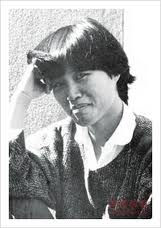
- Springtime at Mt. Jiri
- Published by: N/A
- Level: Intermediate
- First Published in: 2066
Springtime at Mt. Jiri by Junghee Ko is a poetry anthology published in 2006, after the poet’s death. One of its most famous poems is called “Our Village’s Ms. Koo," which most Korean middle-schoolers and high-schoolers are familiar with.

지리산의 봄 (Springtime at Mt. Jiri) by Junghee Ko is a poetry anthology published in 2006, after the poet’s death. One of its most famous poems is called “우리 동네 구자명씨” (Our Village’s Ms. Koo), which most Korean middle-schoolers and high-schoolers are familiar with. It is often recited in May, when Mother’s Day comes around. Junghee Ko uses colloquialisms and typical everyday imagery to rouse sympathy for a working-class mother. Additional floral imagery adds a layer of beautiful fragility, representing the busy mother’s state of mind. The poem culminates with a feminist warning, chiding other family members for not taking care of the exhausted mother.
"One of the most famous poems in this anthology is called '우리 동네 구자명씨' (Our Village’s Ms. Koo), which most Korean middle-schoolers and high-schoolers are familiar with."
Right from the opening line, there is absolutely no mystery as to whom or what the poem is about, as the poet blatantly reveals her subject’s name and marital status. Her name, “구자명” (Jamyung Koo), is nothing special. She is an average Jane Doe, as well as a “맞벌이부부” (Matbulee Bubu), a career woman whose husband also works. Basically, she is defined by her marriage. The next few lines describe Ms. Koo’s bus trip to work, and two Korean cities are mentioned: 경기도 안산 (Gyeonggi-do Ansan) and 서울 여의도 (Seoul Yeoido). Gyeonggi is a residential area, where people commute from, while Seoul is the most developed area in Korea, located right next to Gyeonggi. Many government buildings and business are in Seoul, which receives many commuters from Gyeonggi. It is clear from just the first few lines that Ms. Koo is a nobody, someone anyone can relate to.
"By capturing this simple moment in the everyday life of a working wife, Junghee Ko effectively touches the hearts of children and husbands."
The rest of the poem details how Ms. Koo falls asleep on the bus. The poet goes on to explain “십분은” (those 10 minutes sleeping on the bus) are the result of her feeding the baby in the middle of the night, tending to her drunken husband, and looking after her mother-in-law. The poet sympathizes with the sleeping woman, cooing at her and saying, “그래그래.” By interjecting her own voice into the situation, the poet empathizes with Ms. Koo’s exhaustion. Readers cannot help but feel the same, in their 9-to-5, check-in-check-out, cubicle lives. The floral imagery evokes Ms. Koo’s fragility, as her head sways precariously from side to side while the bus lurches on. The poet describes Ms. Koo’s state as “팬지꽃 아픔” (Pansy in pain). She is like a drooping flower herself, and various flowers are mentioned: “진달래,” “밤꽃,” and “안개꽃.” One of these, “안개꽃” (Baby’s breath), forms a yoke reeling Ms. Koo back home. Then, the poet warns, “여자가 받쳐든 한 식구의 안식이 아무도 모르게 죽음의 잠을 향하여 거부의 화상을 당기고 있다.” That is, the poet laments that the mother’s silent complaints are never noticed by the rest of the family. By capturing this simple moment in the everyday life of a working wife, Junghee Ko effectively touches the hearts of children and husbands.
